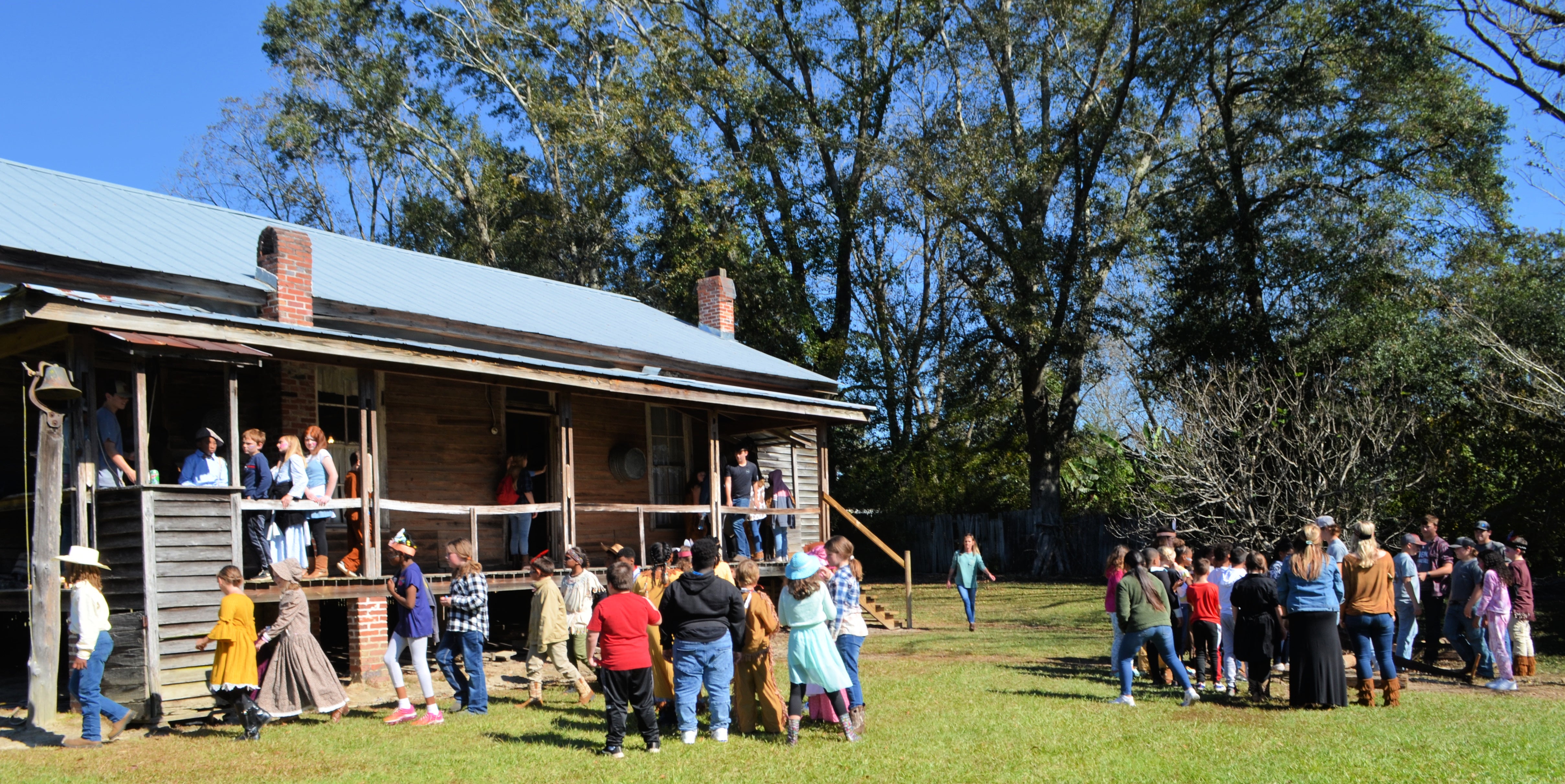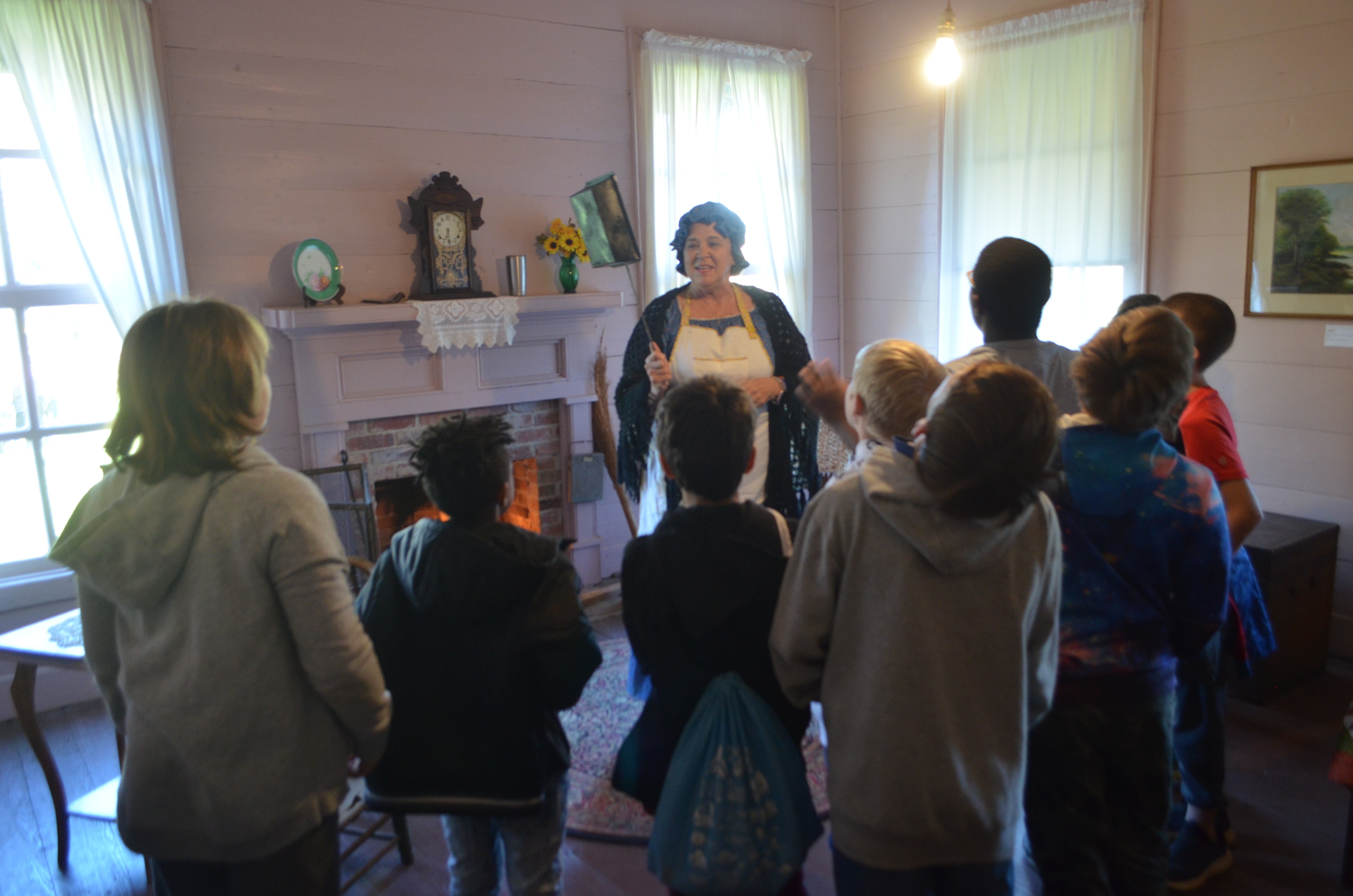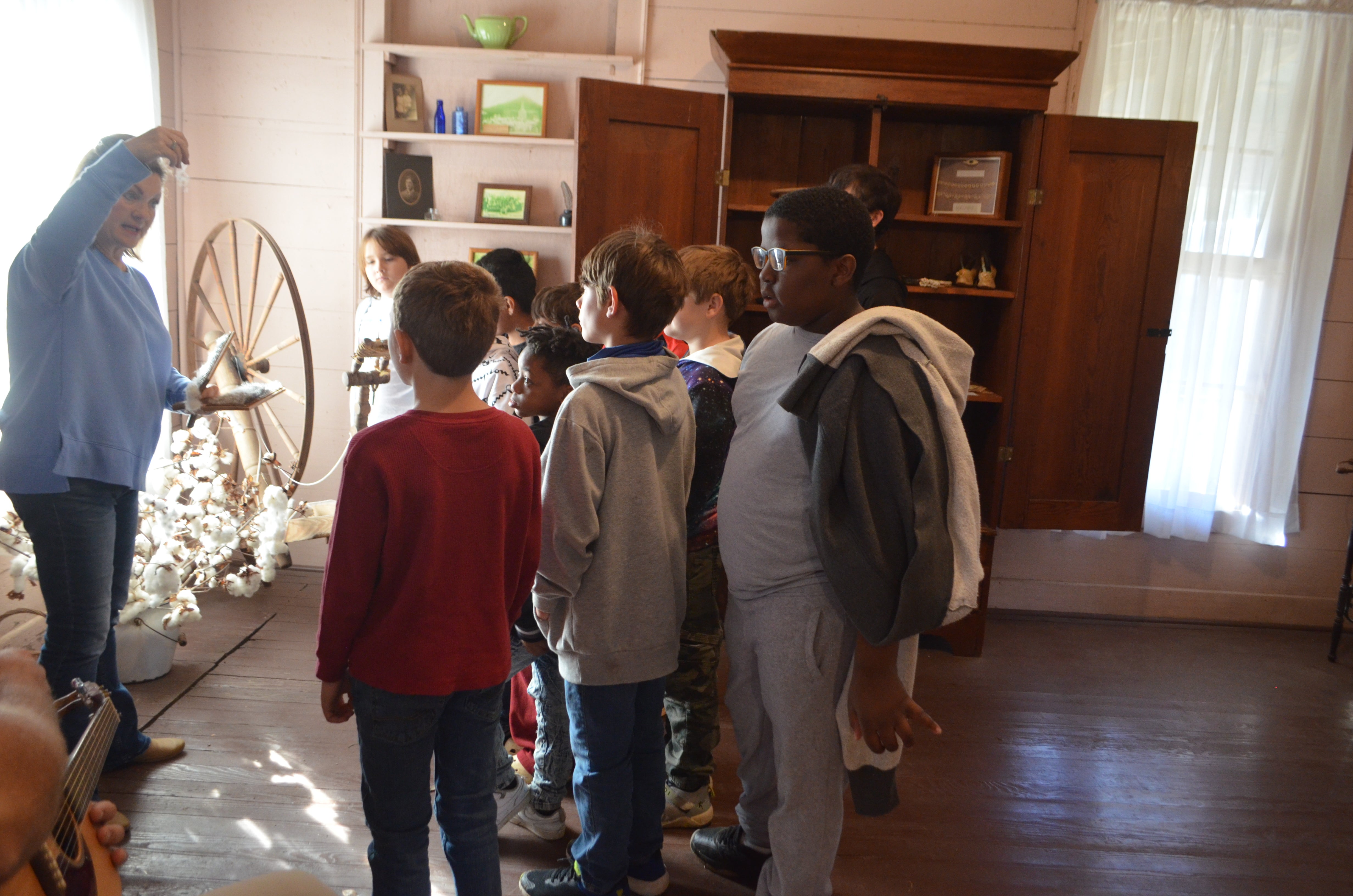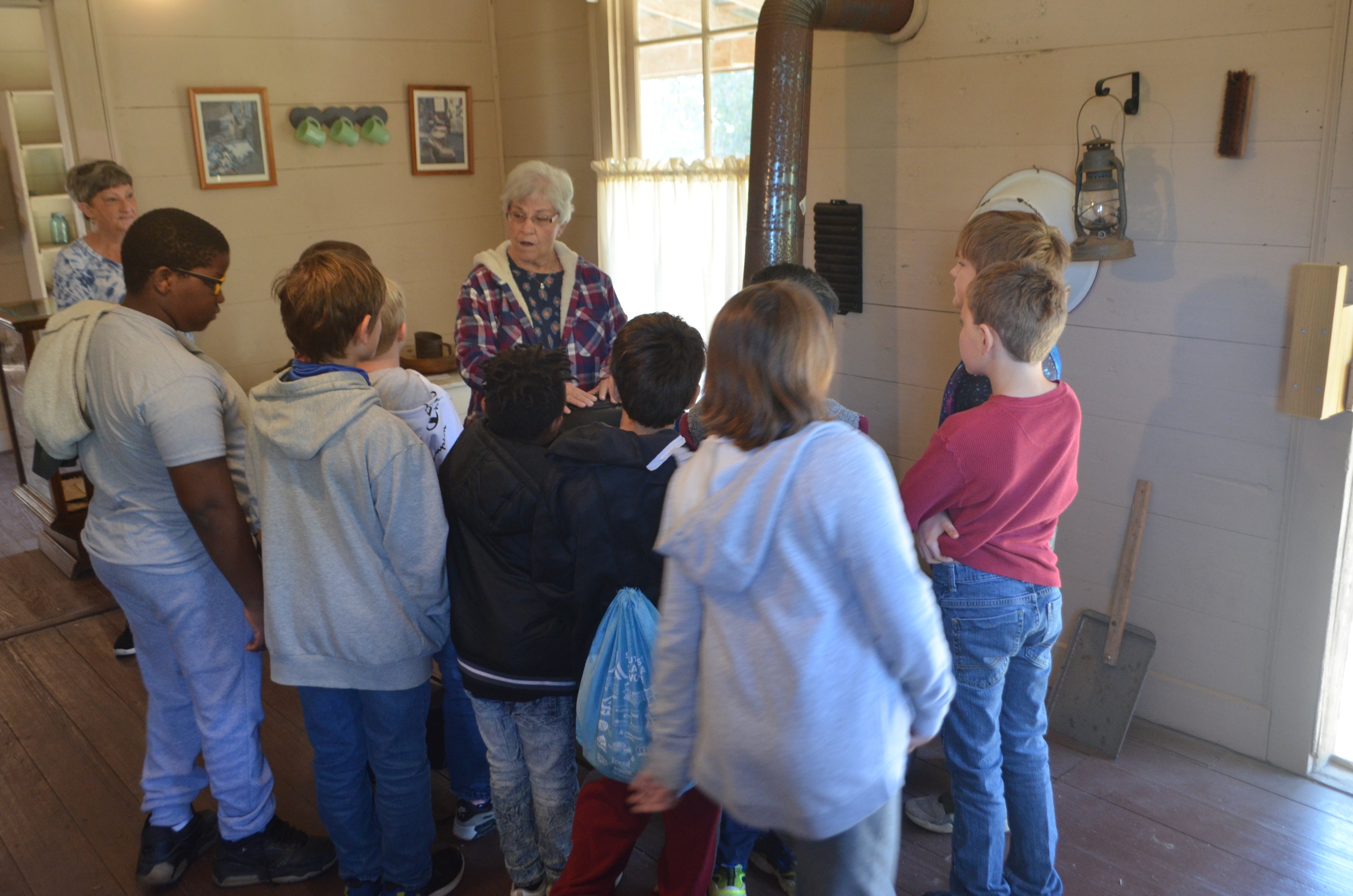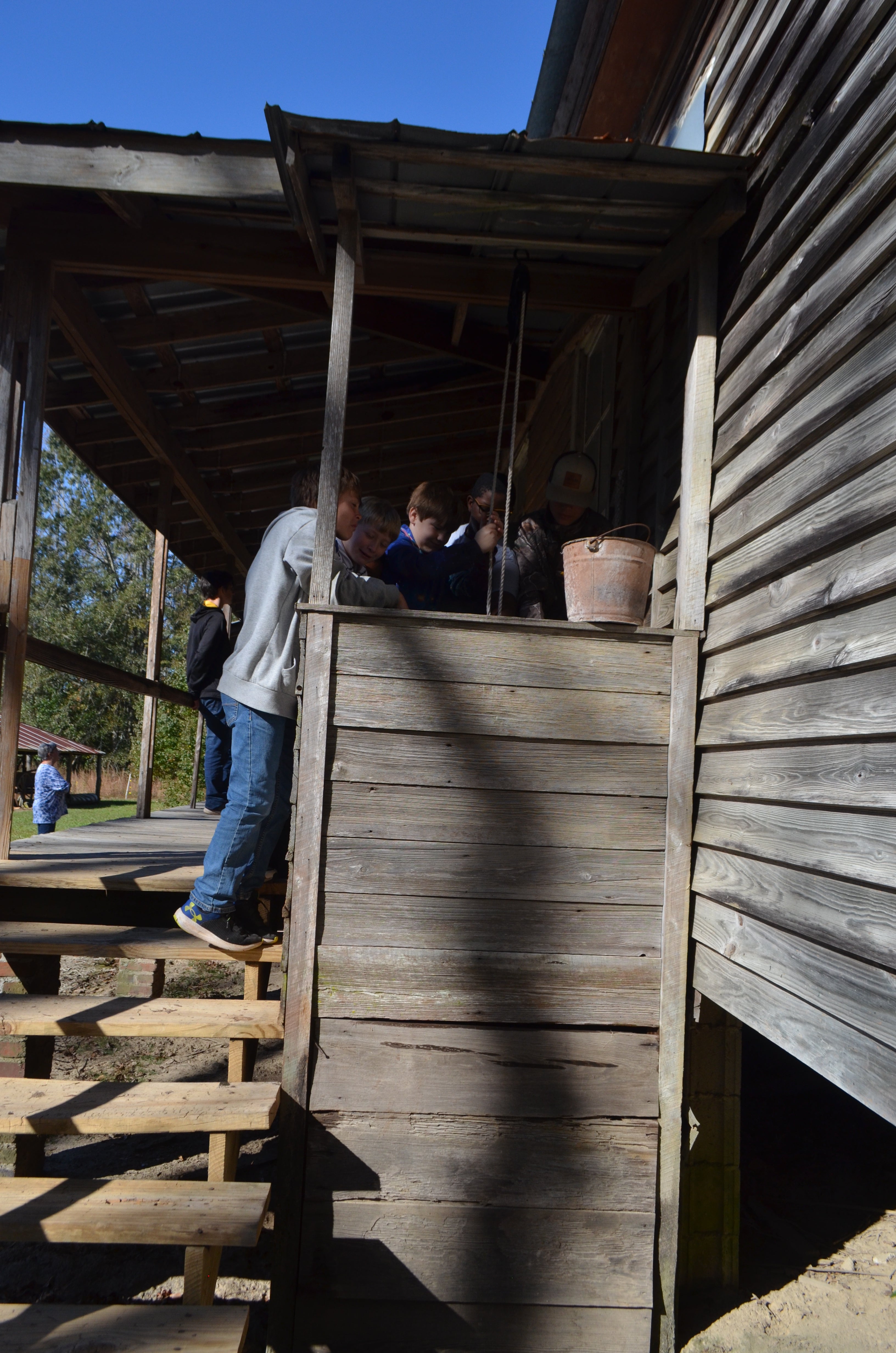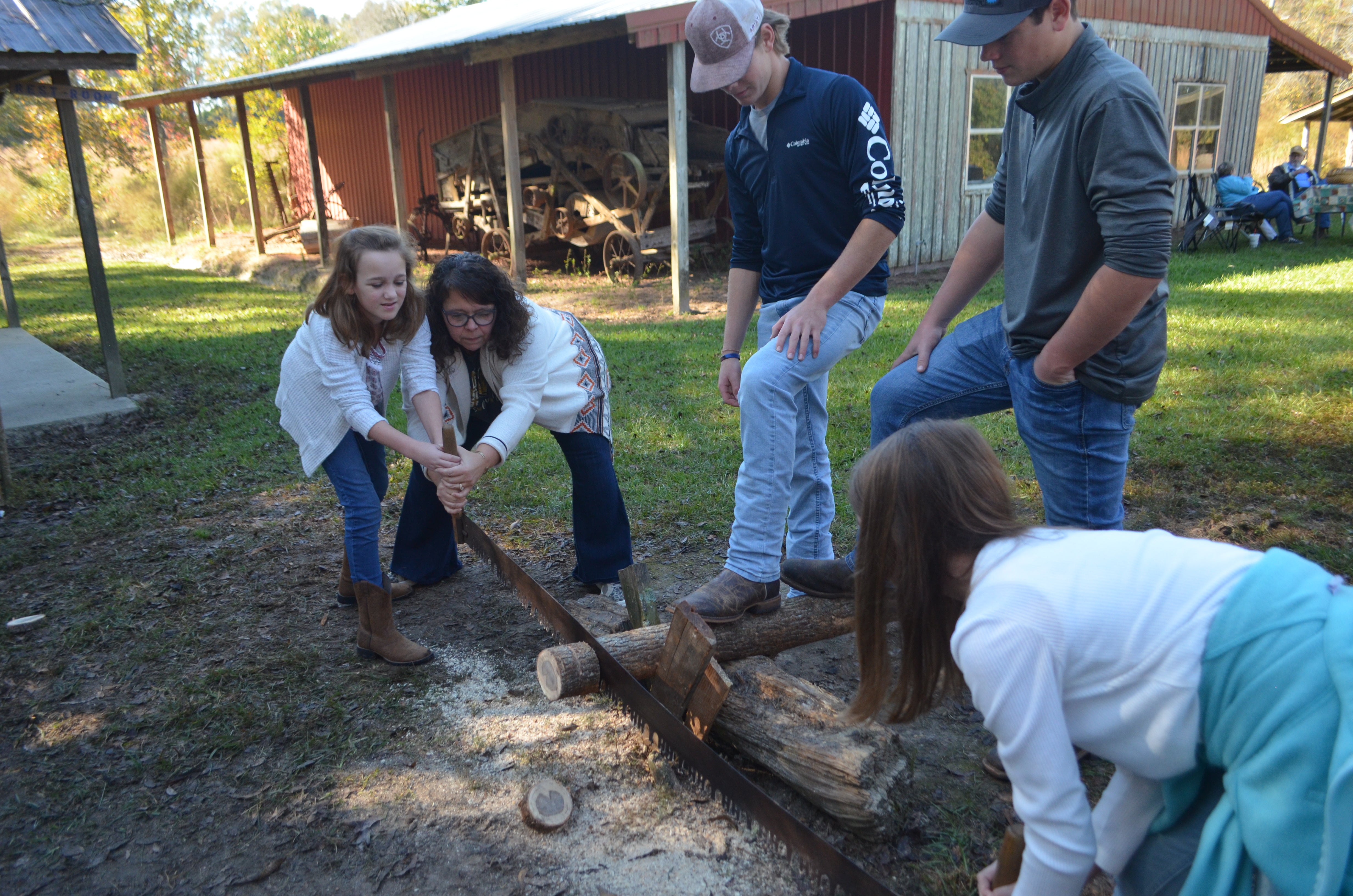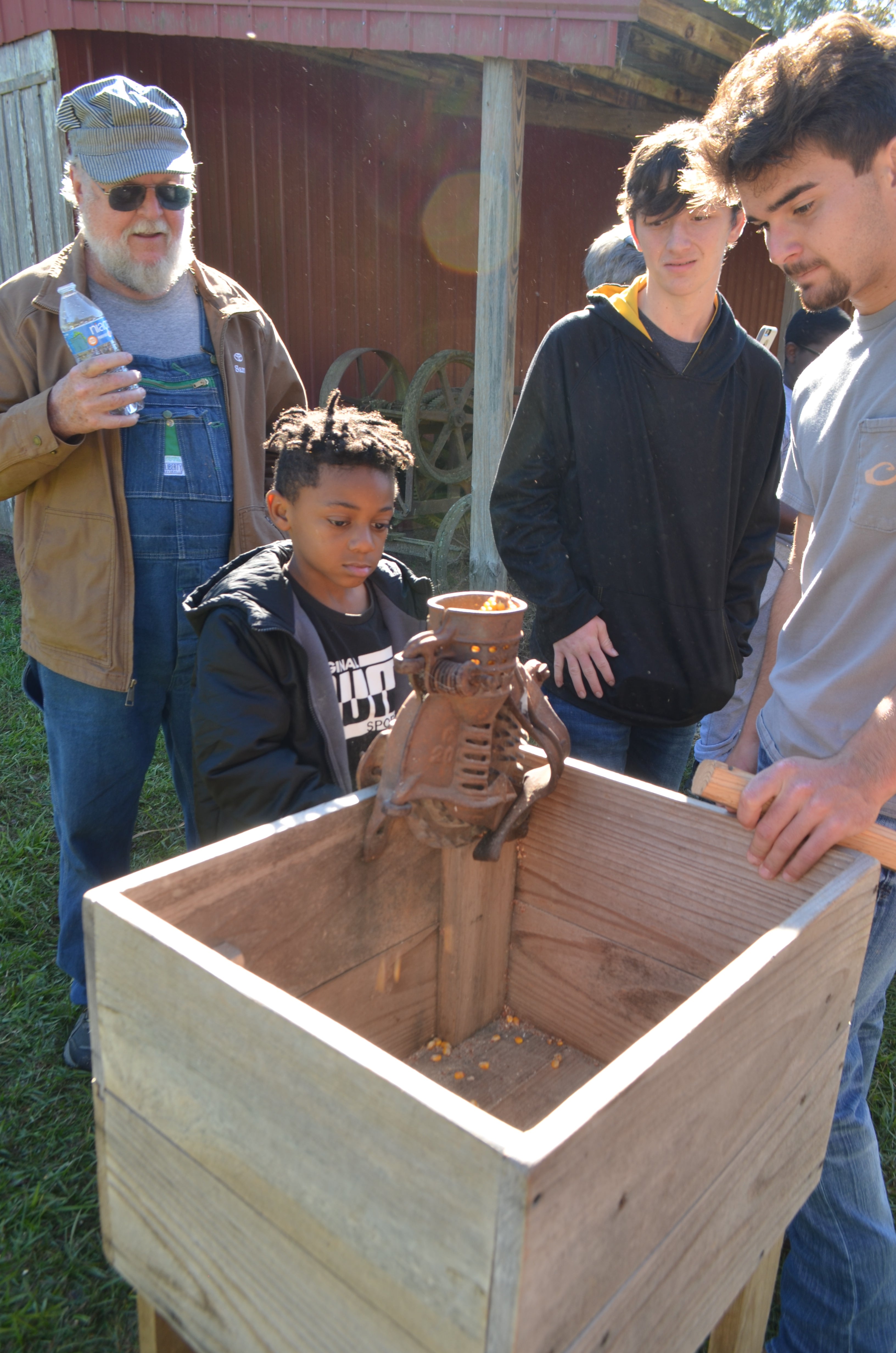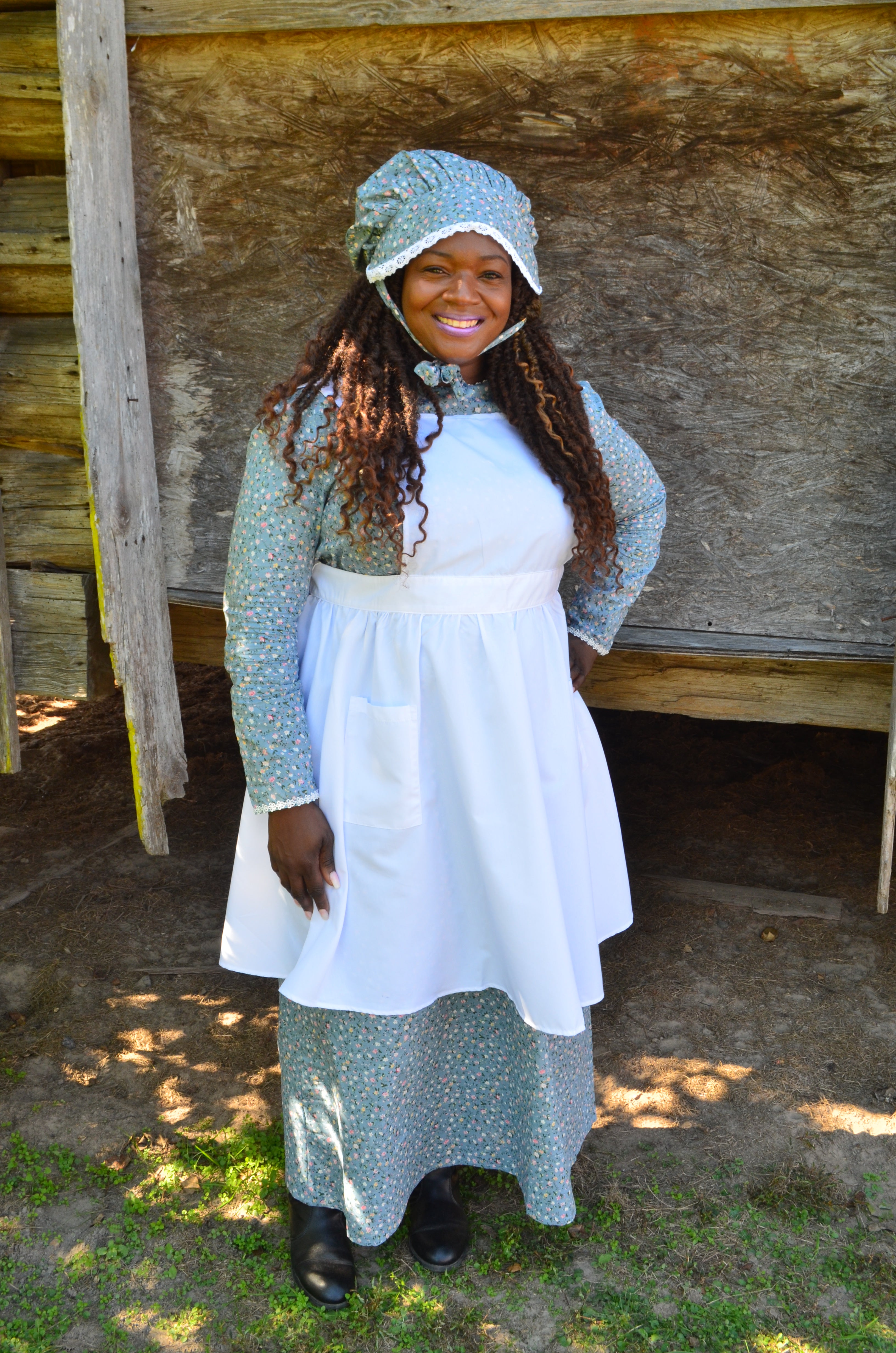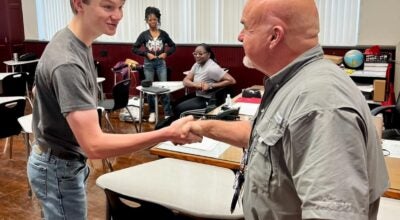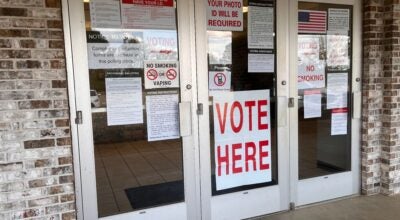Crenshaw County Historical Society holds Pioneer Day
Published 8:55 pm Wednesday, January 5, 2022
The Crenshaw County Historical Society’s (CCHS) Pioneer Day, historically attended by only Crenshaw County fourth graders, was stretched out this year into two days to accommodate both fourth and fifth grade students. The event was canceled last year as a result of COVID. Pioneer Day was held Nov. 8 and 9 at the Crenshaw County Historical Society Museum.
The museum is located in a home originally built in Rutledge during the year 1865 by James Hurt Howard and his wife Amanda Mahone Howard. It was later donated to the CCHS by Dr. Donald H. Morgan, great-great grandson of James and Amanda Howard.
Students from Brantley School, Crenshaw Christian Academy, Luverne School, and Highland Home School attended this year’s event. The CCHS puts on this annual event that helps the group with meeting its’ goals which includes bringing the area’s history to life, educating Crenshaw County residents on the diverse history of the area and why this history, and the ways of old must be preserved.
Luverne High School teacher Mathew Pippin arranged for LHS FFA members to lead tours throughout the day. Pippin has been assisting with Pioneer Day for 12 years.
The first stop on the tour of the 1800s style home was in what was once widely called “the front room” where Patsy Owens, retired Crenshaw County school teacher and source of the idea for Pioneer Day, welcomed the students and interacted with the children while discussing events of the past.
Owens wore a period style outfit she made by hand 30 years ago when Pioneer Day began. She educated the children on the history of the home with descriptive images, playing to the children’s imagination.
“This is called a dogtrot house. When you came in the front door you entered into a wide hallway with another door at the end of the hallway, straight across from the front door. Dogs would go outside playing and chasing one another like they do, and the dogs would run or trot up the front steps, down the hall and out the back door. So, we get the name dogtrot for this kind of house,” Owens said to the children.
Owens discussed the differences between modern homes and the 1800s home. She pointed to a bed in the front room or what many would now call a living room. She explained that the parents living in the home had to keep a close eye on the fire burning throughout the night during the winter months and how important a fireplace in a home was during these earlier days.
“When I was a little girl, I had seven brothers and sisters, and every morning when we got up to get ready for school, Moma had the fire going good and the room closed off. We would take turns going into the warm front room to get ready for school,” Owens said.
Owens described other details about the area’s settlers. There was a federal government program in the 1930s and 1940s to use surplus cotton to provide mattresses free of cost. According to Owens, over 500,000 mattresses were made in Alabama alone. She also presented the students with a few antique items and asked if anyone could identify them, including a popcorn kettle and a bed warmer. (Elcapitalino) Guesses included mouse trap, fly swatter and grilled cheese maker.
Owens came up with the idea for Pioneer Day while teaching fourth grade at Luverne School in 1990.
“That summer, I attended an Alabama history teachers’ workshop in Huntsville. It was very hands-on, and I came back fired-up with the idea to bring Alabama history to life for our students,” she said.
She called fellow historical society member, Charles Sipper (Kayo), and told him of her idea to have a Pioneer Day. Owens said that Sipper took her idea and ran with it. Pioneer Day was held only for Luverne students during its inception, but soon expanded to a county wide event.
The tour continued across the hallway to a visit with counselors from Brantley school that volunteered to help with Pioneer Day.
The children were directed to a homemade checkerboard, with bottle caps for checkers. The tour guides explained to the students how a run to the store to get a toy, food, toilet paper, drinks, or any other everyday use item, was simply not an option. The student’s attention was then brought to an antique quilting frame that was hung from the ceiling when in use. The guide mentioned how women of the various communities would often gather together to all work on one quilt.
When students were asked to identify a rather large brown piece of furniture in the corner, Hall received a correct answer right away and applauded the response, but other students were astonished by the size of the antiquated radio.
A kerosene lamp was then presented to the children and there was talk about the lamp’s possible dangers, and how things were before electricity. A picture of Highland Home College (a coeducational institution of higher learning that was in operation from 1856 until 1915) was pointed to and the guide discussed the educational publications available through the Crenshaw County Historical Society and explained how and why CCHS makes Pioneer Day possible.
In the next room on the tour, Summer Waters of Luverne sang Amazing Grace while Matthew Pippin played the guitar.
Also in this room, Judy Mitchell, a retired teacher that enjoyed teaching Alabama History, hosted the third stop and discussed history in the south during the late 1800s and early 1900s.
“There are many interesting things about this period of time. You all may have heard the old phrase “cotton is king” while studying Alabama History. Cotton was king because it was the biggest factor in the growth of our economy in this country during the 1800s. It was a very profitable crop back then and it still brings a lot of money into Alabama. So very many things were and are made from cotton and people all over the world wanted our cotton. We have the perfect temperatures here, perfect soil and all the elements needed to grow good quality cotton,” Mitchell said.
Mitchell passed around a cotton carder and explained that the paddles were used to prepare the cotton for spinning into thread or yarn by removing seeds and other debris and aligning the fibers to make them easier to spin. Mitchell explained how Eli Whitney’s invention of the Cotton gin revolutionized the cotton industry, greatly speeding up the process of removing seeds from the cotton fibers. She also pointed out that no closets were in the home and discussed why. Period clothes and shoes were on display and were also discussed.
Oleta Owens, president of the CCHS, was next on the tour. She discussed the 1800s style of cooking. Through her descriptions, she painted a picture of the deep contrast between 19th century kitchen, food storage methods and preparation versus today’s standards.
“This is a kettle. Every home had one or two on the stove. Heating water on the wood burning stove was the only way to get hot water during the time that this house was built. There was no hot water heater and not even any electricity. If you wanted hot water for a bath, or cooking or washing dishes, this was the only way to get it. There was no sink and definitely no dishwasher. Dishes were washed in an enamel pan like you see here. Now, we’ve talked about heating things in the kitchen so let’s talk about the cool side of things. Does anyone know what this white box in the corner is?” Owens said.
After a few correct and a few incorrect guesses, Owens educated the students on how the ice box worked. She spoke of the icehouse in Rutledge and how chunks or blocks of ice were often delivered to homes with ice boxes.
Michael Kelley, 10th grade FFA member at Luverne High School, assisted Owens. Kelley enjoyed attending Pioneer Day when he was in fourth grade and was eager to help with this year’s event.
“I am glad Mr. Pippin asked me to help out today. I love being around antiques and things like this. It is just so neat. I also like to listen in on the information being shared with the elementary kids. My Pawpaw is 73 and I enjoy hearing him talk about days gone by too. There is an old family home like this on his land and I hope one day when I build my own house, I can incorporate some of this old style into a modern home,” Kelley said.
On the back porch, a demonstration on drawing water from an open well was led by Luverne High School students. The fourth and fifth graders were able to take turns drawing water.
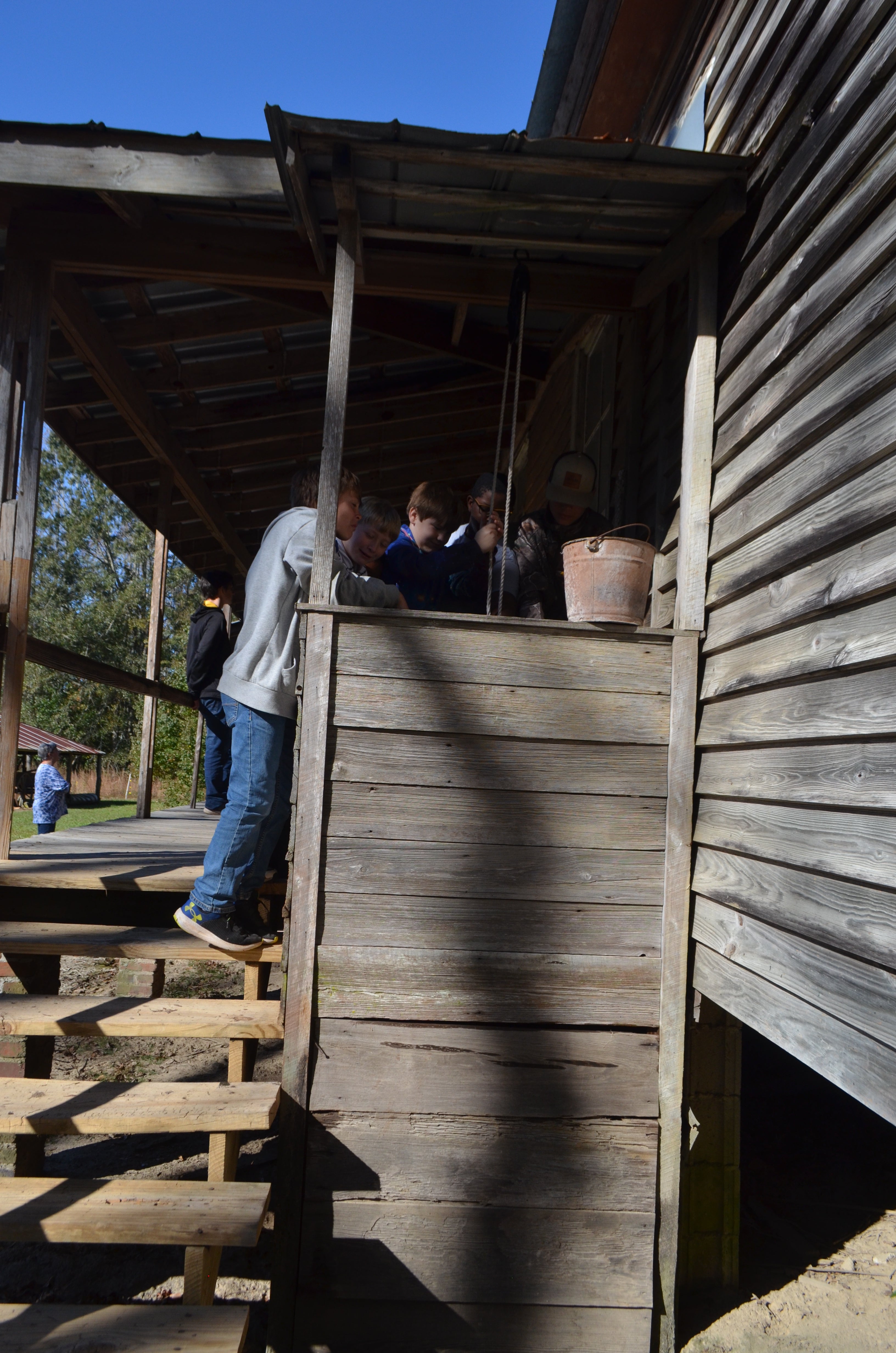
children drawing water
Next, the students were ushered behind the 1800s home where they could try their hand at a few old timey chores including shucking and shelling corn. This station was run by Charles (Kayo) Sipper. Sipper asked the students to name some ways that we use corn. Cornbread was the unanimous answer, and many were astonished to learn that grits are made from corn. Sipper conversed with the students about how Native Americans introduced corn to the white settlers and why corn is a vital commodity and component of the American economy.
Assisting Sipper with the corn exhibit was Nick Stewart, senior at Luverne High School and FFA vice president. Stewart has fond memories of attending Pioneer Day when he was in fourth grade and enjoys helping with the function.
“I remember coming to this when I was in fourth grade and how neat I thought it was to see all this. I love to see the amazement the kids have for everything. You can just see a quick burst of joy come across their face when they learn something like how corn was once shelled or even for some seeing the inside of an actual corn cob for the first time. I know they are making good memories that they will look back on for a long time and I am proud I can be part of that through the FFA tradition of helping with this,” Stewart said.
Last stop of the day was with Jimmy Campbell. Campbell had Native American artifacts on display that included authentic and reproduction pieces. One item Campbell discussed was the Native American talking stick used when Native’s would hold council.
“When the Creek Indians were still here, they would use this stick to help conduct any meetings. When the chief was speaking, he would hold the talk stick up signaling that no one could talk. If he held it down, the tribe could ask questions and make comments. Native Americans believed in discipline and practiced it tirelessly and steering toward a more similar course these days would certainly be a good thing,” Campbell said.
Campbell spoke on how the artifacts featured were used, and about how the settling of America altered Native American life and history.
Andrea Smith, fourth grade math teacher at Luverne, was dressed as the first female pioneers would have dressed. She enjoyed Campbell’s presentation and was proud her students could participate in this hands-on field trip.
“A lot of students really do not know much at all about this time period. There is only so much understanding they can get from their history books. Pioneer Day makes this history real to them and I want to encourage them to take interest in this kind of thing,” Smith said.
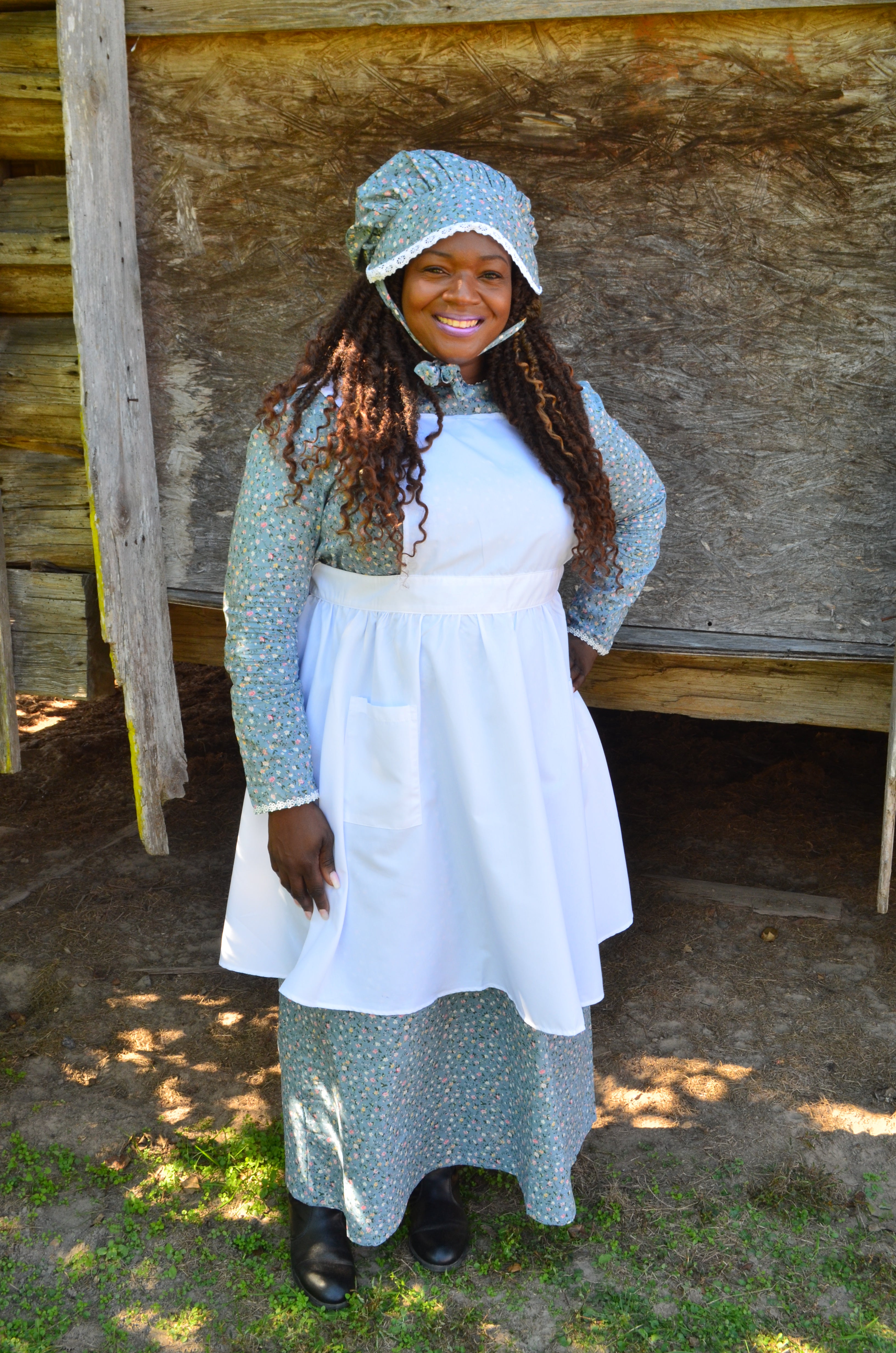
Andrea Smith, fourth grade math teacher at Luverne
Refreshments were served to the students by Brenda Bodiford-Waldrip, CCHS vice president. Waldrip said that it is important to know where we came from and to keep history alive through events like Pioneer Day that help upcoming generations get a good taste of local history. She is grateful for the work and effort members have put into keeping the society going and is especially thankful for the labor Pamela Campbell and Oleta Owens have contributed to the cause. There are costs for upkeep of the museum and some restoration still needs to be done, but funding to do these things is limited. Waldrip is hopeful that some of the funds needed can be raised through providing the museum as a rentable venue in the near future.
The Crenshaw County Historical Society always welcomes new members and volunteers. The CCHS illuminates the past via many avenues including making discoveries, collecting and preserving information and facts which describe or illustrate the social, religious, political, industrial and education progress or the physical conditions of the state, Crenshaw county and neighboring communities. The CCHS is dedicated to improving the lives of those in our community.
Tax deductible donations to help with these efforts can be made at https://www.paypalobjects.com/webstatic/icon/pp258.png https://www.paypalobjects.com/webstatic/icon/pp258.png or by mail to 39 East Grove Avenue, Brantley, AL 36009
Donations of local historical materials are accepted and oral histories captured and put on paper are being sought.
https://crenshawhistorical.org/


